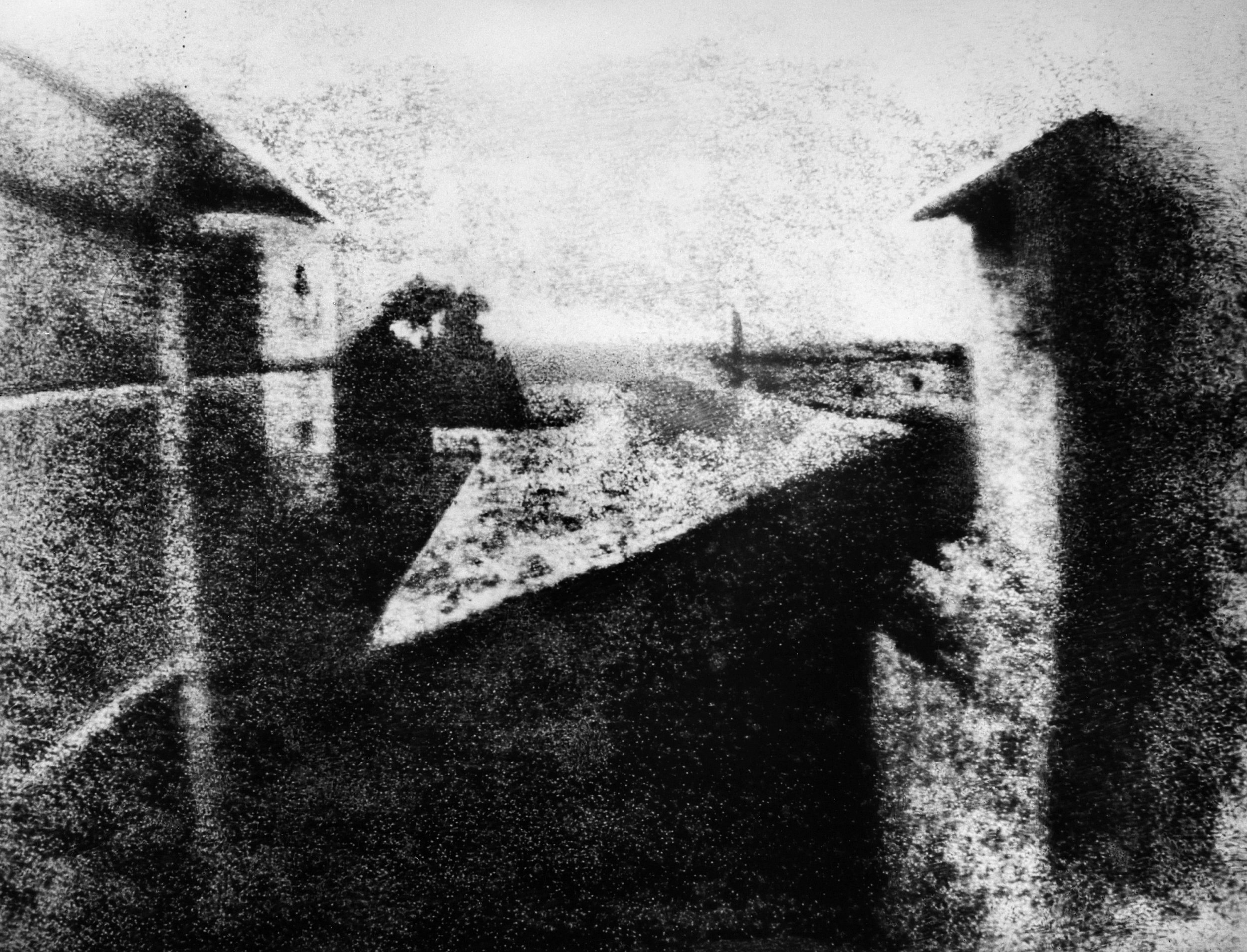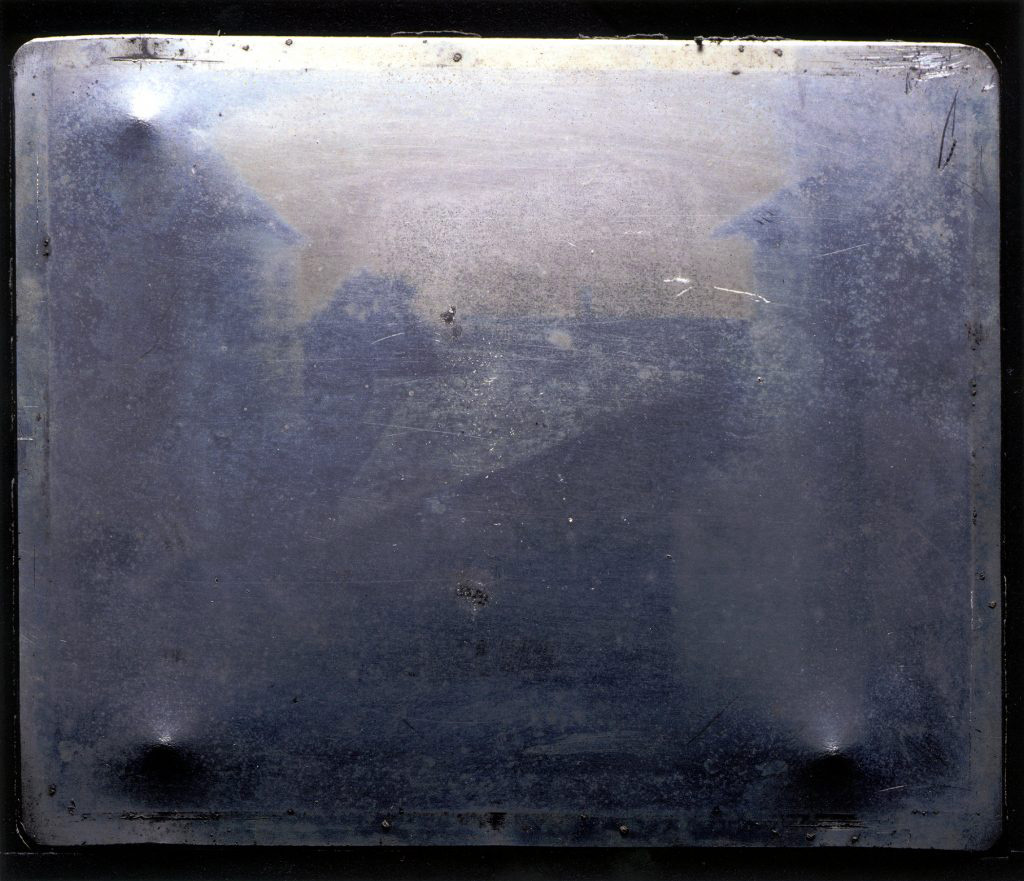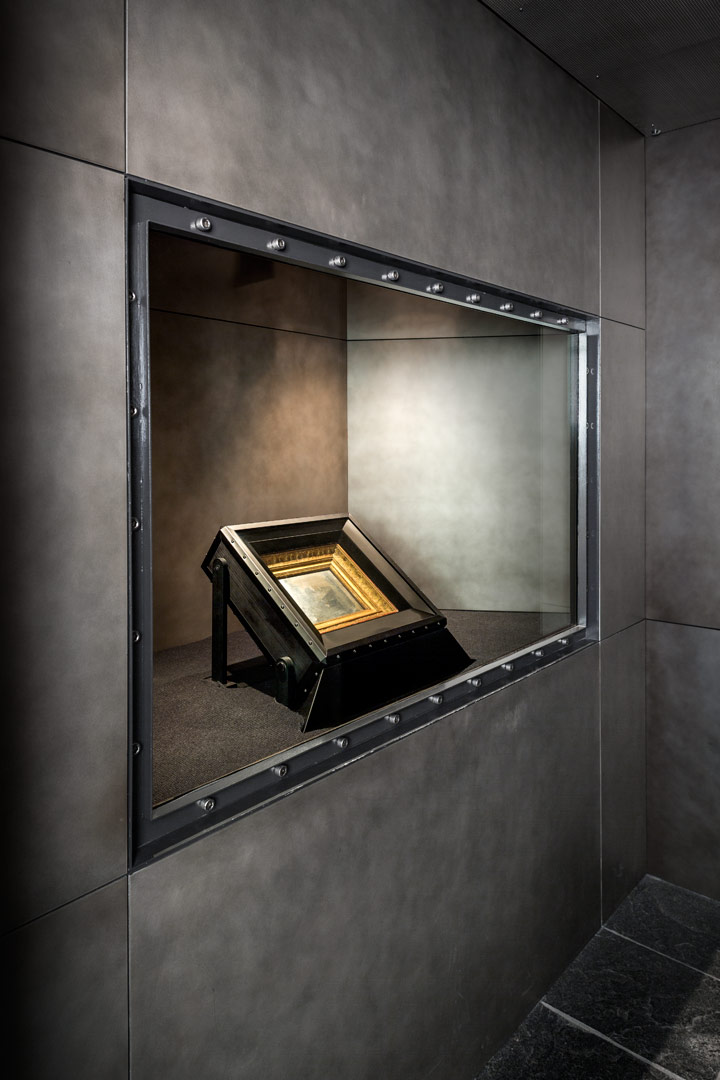The story of the first ever photograph, and the man who made it, Joseph Nicephore Niepce.

This, ladies and gentlemen, is the earliest surviving camera-made image – the very first photograph.
Made in 1826 or 1827, titled “View from the Window at Le Gras”, it was the result of 10 years of research by a French inventor Joseph Nicephore Niepce and is an eight hour exposure.
Whilst not immediately striking, this is arguably the most important photograph ever made, this image represents the birth of a whole new genre and a genuine revolution in the art world.
The year is somewhere between 1717 and 1727, German scientist Johann Heinrich Schulze, experimenting with mixtures of chalk, nitric acid and silver discovered the mixture darkened when exposed to light.
He arguably created the first ever photograph by placing stencils onto bottles containing the liquid, but history is full of who invented what.
Using this information, Thomas Wedgwood (the son of the famous potter) in and around 1800 experimented with paper coated with silver-nitrate. By placing paintings on glass onto the paper coated with silver nitrate and exposing it to light, he achieved a reproduction of the painting.
The paper gradually darkened except where it was shielded from the light by the lines of the painting. However, he could not ‘fix’ (fixing also referred to as being light fast, as in, it won’t fade in the light) the picture and the unexposed areas eventually darkened completely.
Niepce was an avid inventor but he was unaware of these previous experiments when he began to experiment with lithography in 1816 – or so he says, who really knows. He tried to transfer images onto the lithographic plates by means of light and then went on to experiment with light-sensitive materials and the camera.
Like Wedgwood before him Niepce used a silver salt, this time silver chloride. He succeeded in making a picture in his camera but was dismayed to find the tones of his picture had been reversed by this process; he had produced a negative image.
Unfortunately his attempts to take a print from his negatives failed and it was for an Englishman, William Henry Fox Talbot, to discover the negative-positive process some 20 years later.
Discouraged by this reversal of tones and his inability to fix the picture, Niepce concentrated on finding a substance that would produce direct positives. Around 1822 he experimented with Bitumen of Judea, a derivative of asphalt. Normally bitumen dissolves in oil of lavender but, once exposed to light, it becomes hard and insoluble.
Niepce started by oiling an engraving to make it transparent, then he put it on a glass plate coated with the bitumen and oil of lavender solution and exposed it to the light. The dark lines of the engraving held back the light while the blank areas let it through.
When he washed the plate in lavender oil and turpentine solution the areas on the plate corresponding to the lines of the print remained soluble and washed away.
Niepce later experimented with pewter plates and achieved his final goal – the making of the first picture with the camera – sometime between 1826 and 1827. He triumphantly called his new process Heliography, from the Greek helios meaning ‘of the sun’.
On his way to England in 1827, Niepce met a Parisian painter working on a similar project – Louis Jacques Mande Daguerre. While in England, Niepce tried to gain recognition for his invention and presented some plates to a member of the Royal Society (of Science). His attempts to promote the invention met with repeated failure and he returned despondent to France.
In 1829 he signed a contract with Daguerre to collaborate with him in perfecting the heliography process. His picture, the only tangible evidence of his success, remained in England. Lost in 1898, it was thought to have been a romantic fabrication until the photographic historian Helmut Gernsheim rediscovered it in 1952 in an attic.
In 1833 Niepce died of a heart attack at the age of 69. To a large extent his pioneering work in photography was overshadowed by the dramatic announcement in 1839 of the daguerreotype, the first fully photographic process. Can we make a judgement of these two characters? Niepce called the process a Heliograph, whereas Daguerre named it after himself…Although Niepce, as Daguerre’s partner, received some public recognition, his invention of heliography was really a dead end in the history of photography. But he still has a place as the first man to record a lasting photographic image.
The picture illustrated is now in the Gernsheim collection at the University of Texas.


